JOURNEY WITH JESSICA
Words Matter (Part Three) – Respecting Preferences
How do you refer to disabilities? Is it person first: “person with disabilities” or identity first: “disabled person”?
The answer isn’t as easy as you might think. Language is constantly evolving along with communities and cultures. The umbrella of disabilities is far reaching—even more, some whom the medical community might considered disabled do not personally identify under the umbrella, even if the supports and legal protections offered are utilized. Others experience so much internalized ableism (the belief that disabilities make a person “less than”) that they reject supports, protections, and connections to those who might have similar challenges living in a world not made for the body or brain they have. Some people with disabilities from childhood have been taught to hide or mask their disabilities, rejecting who God made them to be in order to ‘fit in.’ Other people consider their disability an integral part of who they are, and they embrace it as part of their identity.
“Person first language” was introduced by disability advocates in 1988 and popularized in the late 90’s. The idea was that people aren’t their disability. Instead, they are a ‘person with a disability.’ It was an attempt to acknowledge an individual’s humanity when society had been viewing and treating disabled people as less than human. We weren’t people to be accepted but disorders to ‘cure’ or problems to ‘deal with.’ It made sense in a way.
The Deaf Community strongly objected to being called “People with deafness.” They, instead, called for “identity first” language. Deafness is an inherent part of who they are, not a defect and they choose to own it with pride. An important tip: Capitalize the word “Deaf” when referring to the Deaf Community. Lower case “deaf” if referring to the auditory condition.
Blind people tended to agree. They were not fond of being referred to as “people with blindness.” Both Deaf and blind communities have been outspoken and able to self-advocate. Other disability types tended to have others talking about them, not giving them a voice.
Over the past decade autistic people have begun to organize and create an autistic community. Together, they have found Autistic Pride and their own community voice, fighting against those non-autistic people telling them who they are and what is in their best interest.
Person-first language was meant to acknowledge the personhood of every individual. It is rather counter to the intent if we argue with people when they decide to use identity first language. Rumblings in the disability community lead me to believe this trend will continue.
For a quarter of a century, I’ve been using the term “person with a disability.” I was taught that was politically correct and I think it was a needed trend in a world where the ‘r-word’ was considered socially appropriate. People, especially medical professionals, needed to acknowledge the innate humanity—see the full person, not just the disability. For a while now, I’ve begun to change. I consider myself disabled, just as much as I consider myself an artist. I am proud of how God made me. As I’ve been writing this blog, I’ve thought hard about how to refer to disabled people. As I am a disabled person, talking about my personal community, I’ve chosen to mostly use “identity first” language. It’s also less awkward. If I am referring to a disability or condition outside of my personal identity, like Down’s syndrome or cerebral palsy, I will use person-first language, as I’ve never heard anyone in that community express otherwise. I will always use person-first language when referring to the Deaf, Blind, and Autistic communities as they have all stated their preference.
As for people in your life—ask them how they wish for you to describe them and their disability. If they request identity-first language, don’t argue with them. The point is to see and value people as they are and how they choose to identify. Let each individual and community choose how they wish to be referred to. The important thing is to see each person as full and complete, a unique creation in the image of God.
Bridge Blogger Jessica Thompson
Categorised in: Journey with Jessica
